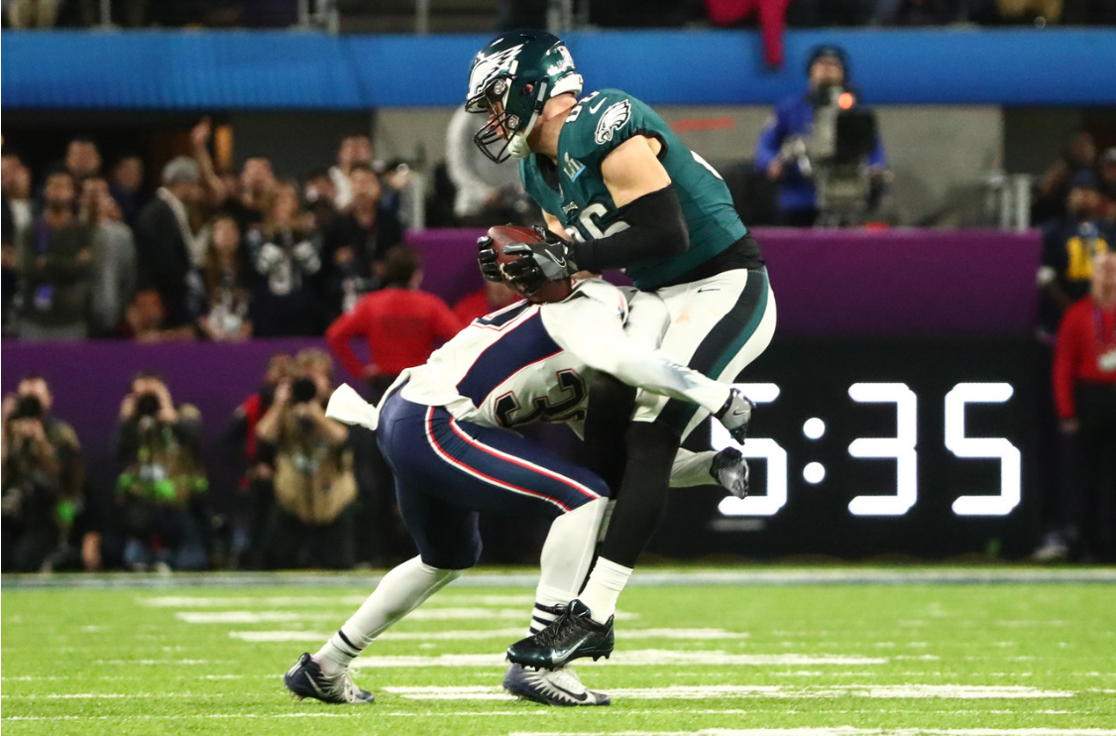 American Football stands head and shoulders above the rest as the most popular sport in the United States and with good reason: it is fast, physical and incredibly exciting. Sampling a game is an absolute must as it is so quintessentially American. The fans are passionate and patriotic, and the players are afforded A-list celebrity status. American Football is huge at collegiate level, but its flagship league is the NFL, one of the most popular, most commercialised and most entertaining sports leagues world-wide. This culminates with the Super Bowl, arguably the greatest global sporting occasion of the year. With the average NFL team worth $2.5 billion, and a staggering 103.4 million people tuning into the 2018 Super Bowl, make no mistake, American Football is huge. Here, we will give you a quick rule guide to America’s greatest game, as well as some recommendations of who to watch and where to watch them.
American Football stands head and shoulders above the rest as the most popular sport in the United States and with good reason: it is fast, physical and incredibly exciting. Sampling a game is an absolute must as it is so quintessentially American. The fans are passionate and patriotic, and the players are afforded A-list celebrity status. American Football is huge at collegiate level, but its flagship league is the NFL, one of the most popular, most commercialised and most entertaining sports leagues world-wide. This culminates with the Super Bowl, arguably the greatest global sporting occasion of the year. With the average NFL team worth $2.5 billion, and a staggering 103.4 million people tuning into the 2018 Super Bowl, make no mistake, American Football is huge. Here, we will give you a quick rule guide to America’s greatest game, as well as some recommendations of who to watch and where to watch them.
Background: As the name would suggest, American Football originated in America in the 1860s, when college sides played a game that merged the rules of British football and rugby. American college sport was instrumental in the growth of the game with Princeton, Harvard, Yale and Rutgers, the pioneering colleges who developed the first set of rules, and its influences are still seen today. The National Football League (NFL) was formed in 1920 and was a professional league by 1922. In the 1960s, the American Football League (AFL) was formed, and after securing major television deals and snapping up top class collegiate talent, became a serious rival to the NFL, but in 1970, the two leagues merged to create the NFL we know and love today.
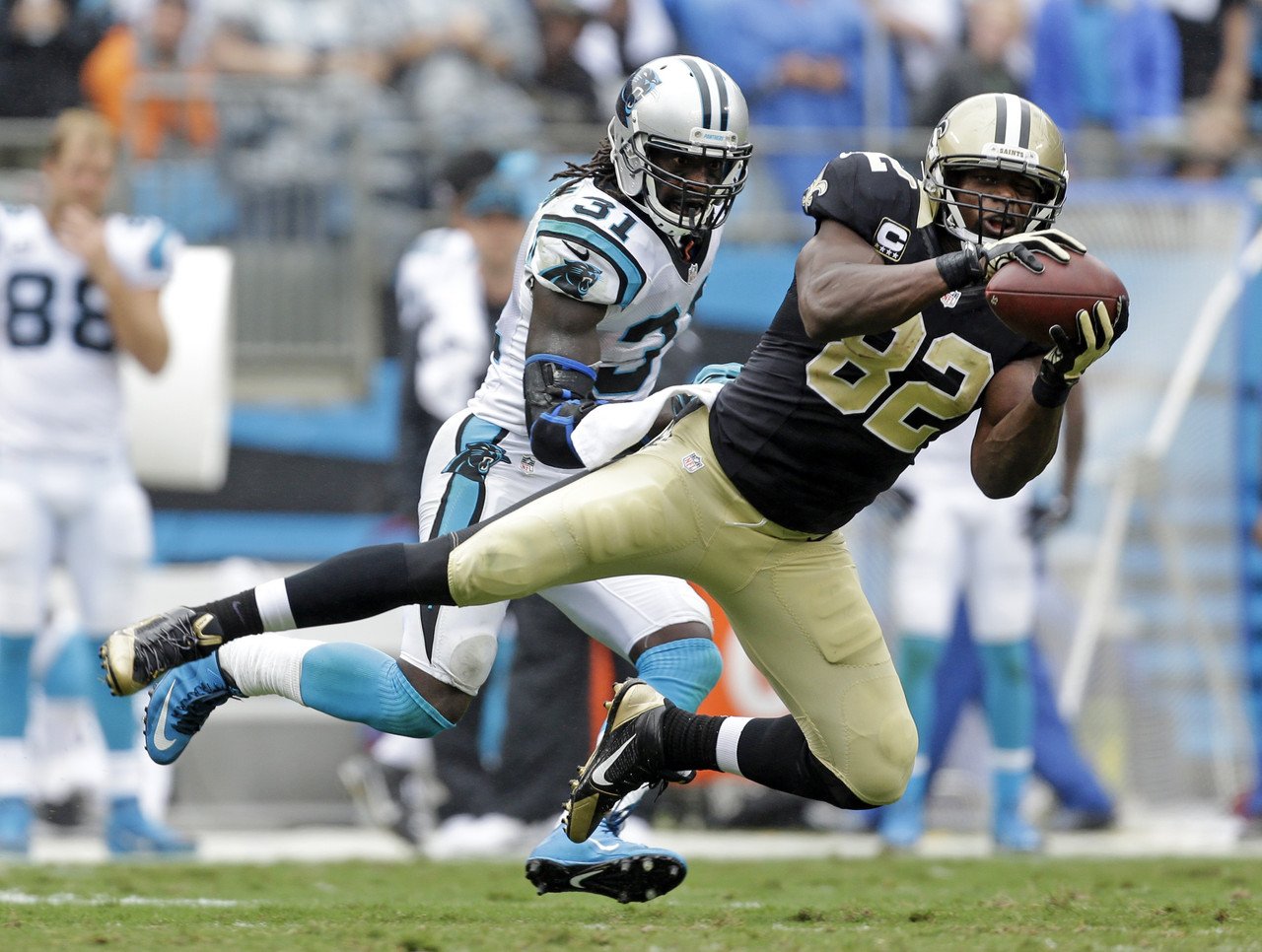 The Rules: An American Football team is made up of 11 players (although a matchday squad is made up of 45 players). When on Offense, these 11 players attempt to work an oval shaped ball from one end of a rectangular field to the other by either running with it or throwing it but they can be prevented from doing so by blocking and tackling from the 11 opposition players on Defence. At either end of the field is an end zone and a set of large goalposts.
The Rules: An American Football team is made up of 11 players (although a matchday squad is made up of 45 players). When on Offense, these 11 players attempt to work an oval shaped ball from one end of a rectangular field to the other by either running with it or throwing it but they can be prevented from doing so by blocking and tackling from the 11 opposition players on Defence. At either end of the field is an end zone and a set of large goalposts.
Teams score by getting the ball into the endzone or kicking the ball through the posts.
The offense has four downs (chances) to advance 10 yards with the ball. Failure to do so results in the offense surrendering possession.
A game is made up of four quarters of 15 minutes, but due to stoppages a game can last for over 3 hours.
Key Terms:
Touchdown - getting the ball into the opposition end zone - worth six points.
Extra Point - occurring straight after a touchdown, the scoring side are given an opportunity to earn an additional one or two points by opting to either kick the ball through the goalposts (like a conversion in rugby - worth one point) or attempting to take the ball into the end zone again (like a touchdown - worth two points).
Field Goal - the ball is kicked through the goalposts - worth three points.
Safety - awarded to the defensive team when an offensive player is tackled with the ball in his own end zone.
Line of Scrimmage - an imaginary line across the width of the field that cannot be crossed until the next play begins. Location is determined by where the ball is placed after the most recent play.
A Snap - a backwards pass at the start of play.
Play from Scrimmage - the team attempts to advance the ball forward and score.
Rushing - running forward with the ball.
Reception - catching a pass.
Turnover - the team with the ball loses possession without kicking the ball.
A Sack - the quarterback is tackled behind the line of scrimmage before he can throw a forward pass.
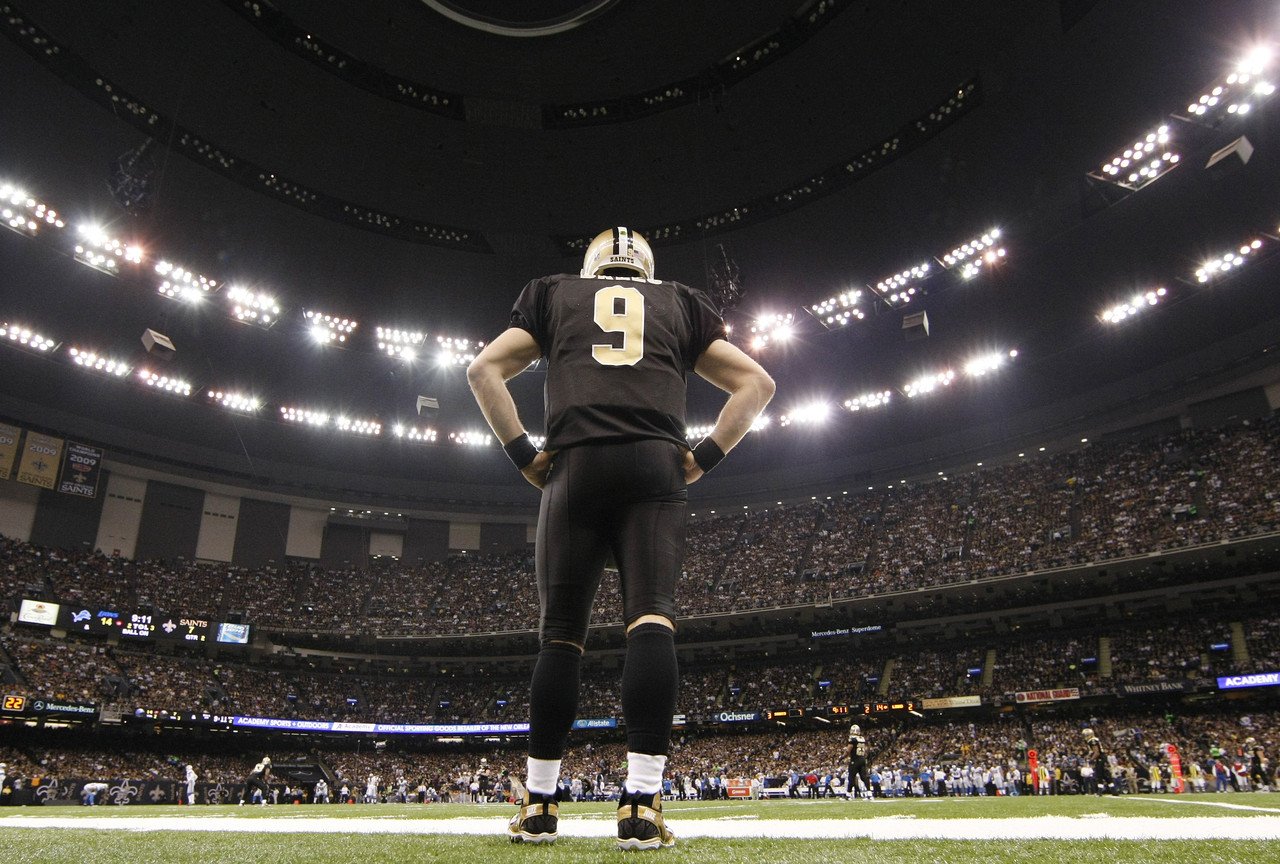 Positions: Players are either Offensive, Defensive or Special Team players. Offense is divided into backs and receivers (Quarterback, Halfback, Fullback, Wide Receiver and Tight End) and the offensive line (Center, Offensive Guard and Offensive Tackle who are all responsible for blocking, so are unlikely to handle the ball throughout the game):
Positions: Players are either Offensive, Defensive or Special Team players. Offense is divided into backs and receivers (Quarterback, Halfback, Fullback, Wide Receiver and Tight End) and the offensive line (Center, Offensive Guard and Offensive Tackle who are all responsible for blocking, so are unlikely to handle the ball throughout the game):
Quarterback – Dictates play. Responsible for throwing forward passes and so must be capable of throwing with power and accuracy.
Halfback – a real all-round athlete: runs, catches, blocks and passes. Often a fast and physical player.
Fullback – similar to a halfback but often bigger as they have more blocking duties, along with catching and running. Normally strong and fit.
Wide Receiver – specialist at catching passes. As the name suggests, the wide receiver splits wide at the start of play, and runs passing routes to receive passes from the quarterback. Require speed and strong catching skills.
Tight End – a mix between a receiver and an offensive lineman. Responsible for blocking, but can also run and receive passes. Has the catching abilities of a receiver, but well-built for blocking.
Defensive roles are divided into three sets of players:
Defensive Line (Defensive Tackle and Defensive End) - tackle ball carriers and rush passers.
Linebackers (Middle Linebacker, Outside Linebacker) - responsible for rushing the passers and tackling the ball carriers. Are often strong and fast.
Defensive Backs (Cornerback, Safety) – the last line of defense. Must defend against passing plays and running plays.
Special Team players are on the field during kicking plays:
Kicker – responsible for kick offs, extra points and field goals, and is a highly accurate kicker.
Punter – responsible for punting the ball as far down the field as possible, when giving the ball back to the defense.
Returners (Kick Returners and Punt Returners) – responsible for catching kicked balls and returning the ball as far as possible before been tackled.
Long Snapper – begins play for the kicker or punter by snapping the ball back to them.
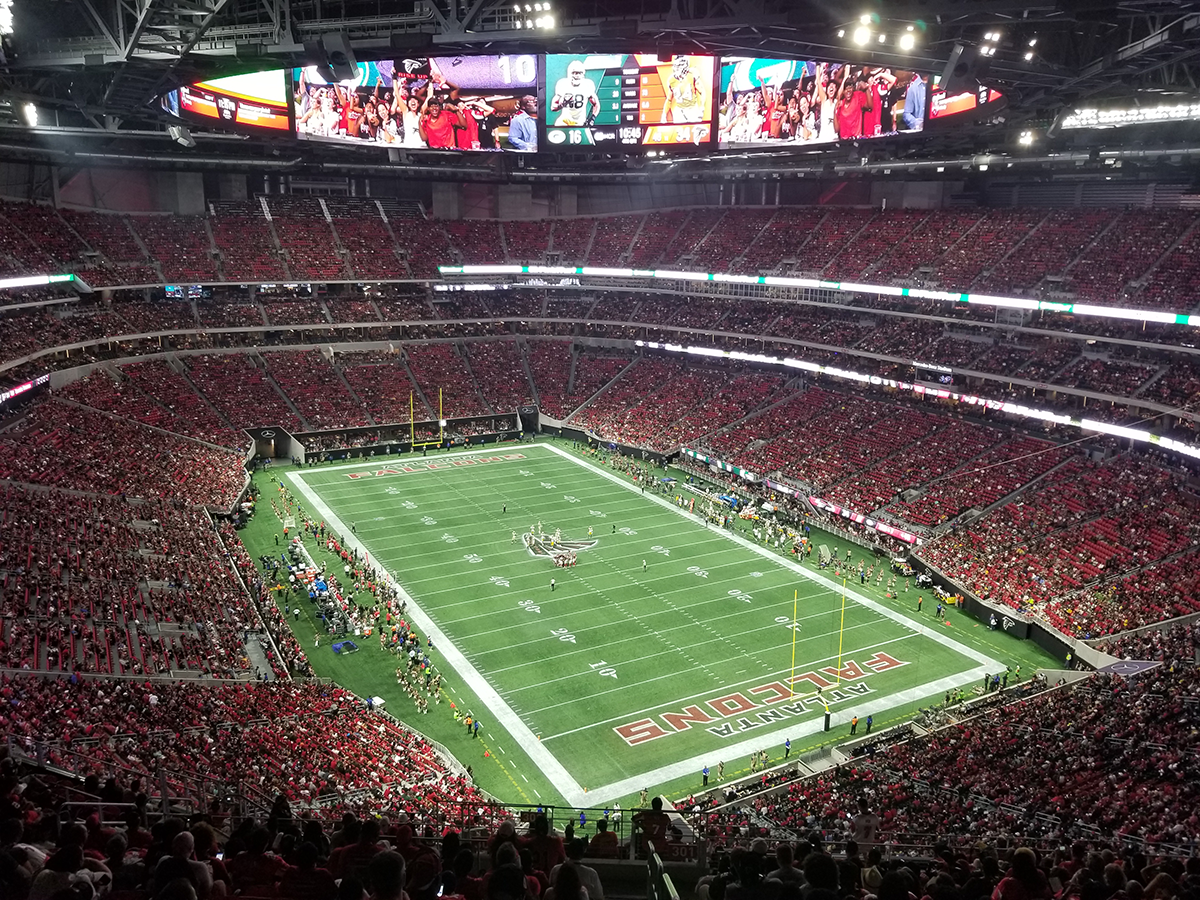 The NFL: This is the pinnacle of American Football. The NFL attracts the highest average attendance of any professional sports league on the planet, and has the greatest revenue of any global professional sports league. It is made up of 32 teams, split into the National Football Conference and the American Football Conference, with the winners of each conference facing each other in the Super Bowl.
The NFL: This is the pinnacle of American Football. The NFL attracts the highest average attendance of any professional sports league on the planet, and has the greatest revenue of any global professional sports league. It is made up of 32 teams, split into the National Football Conference and the American Football Conference, with the winners of each conference facing each other in the Super Bowl.
These two conferences are split into North, South, East and West. Teams play the other three sides in their division home and away, along with a further 10 games against other teams in both conferences. The team that tops each division makes it through to the playoffs and they are joined by four wildcards (team with the next best winning-records). The playoffs are a knockout competition, culminating with the Super Bowl when the champions lift the Vince Lombardi Trophy (named after the legendary Green Bay Packers coach) and their cult hero status is secured.
Cheerleaders, halftime shows and as many adverts as it is possible to cram in, an American Football game isn’t just a game; it’s an event, and there is no bigger event than the Super Bowl.
The Super Bowl is a phenomenal spectacle, with tickets like gold dust. The coveted event takes place on the first Sunday of February and is treated like an unofficial national holiday. The Super Bowl is consistently the most watched event of the year, meaning advertising airtime is the most expensive. Advertising has become an integral part of the occasion, and the half-time show always attracts the biggest names in music.
Due to the staggering amount of money in the NFL, an outsider to American Football would probably expect the NFL to be dominated by a select number of the wealthiest teams, much like the majority of Europe’s biggest football leagues. However, an exciting feature of the NFL is the NFL Draft, which evens up the teams a little. As a result, no team has won back to back Super Bowls since the New England Patriots back in 2005. The NFL Draft is a huge event, which involves teams selecting the cream of the crop from American college football teams. The order of picking is based on where the teams finished the previous season, with the side who finished last getting to pick first, meaning that the weakest side should be able to recruit the hottest collegiate prospect, improving their chances for the upcoming season.
There is another way in which American Football differs from European football - whilst in Europe, players are scouted at a young age and have their talents nurtured by the academies of major sides, American Footballers play at college before being snapped up by NFL sides. As a result, collegiate American Football is also massive…
Collegiate American Football: The standard of college football is high, as it is the second highest tier below the NFL, and in parts of the States, it is actually more popular than the top tier of American Football. Because of the draft, a player's performance determines whether they get a shot at going professional, making it highly competitive. As college football predates the NFL, it is hugely popular due to the sheer tradition and attracts vast crowds.
The major leagues in college football are the Southeastern Conference, the Big XII, the Big 10, the Pac-12, and the Atlantic Coast Conference. These and other conferences culminate with the crowning of the College Football Playoff National Champion. This can be a controversial system, as four teams are invited to play in these playoffs, which is complicated given there are more than four conferences. The invitation is for the top four sides in the country determined by a 13-member committee and there is always debate as to whether the correct sides have been selected. The 1st seed plays the 4th seed and the 2nd seed plays the 3rd seed, with the winners meeting in the Final. Aside from the Championship game there are many other Bowl games that mark the conclusion of the college football season for the teams who have had successful seasons. Major bowl games include the Rose Bowl, the Orange Bowl and the Sugar Bowl.
College football appeals to fans as, like the NFL, it is of a high standard and good quality to watch. However, unlike the NFL, the players are not on sky high salaries, they are not paid at all, just afforded sports scholarships by their universities. For fantastic quality American Football without the showbiz, college football is the place to go.
Traditions: Halftime shows are a massive feature of American Football. At college games, the university band or cheerleaders perform, whilst the Super Bowl sees the biggest names in the music industry take to the stage. Justin Timberlake, Lady Gaga, Coldplay and Katy Perry are the most recent acts to top a star-studded list of past performers.
NFL supporters have a range of wacky traditions, from the Tampa Bay Buccaneers firing a cannon every time they score, to the Oakland Raiders, who dress in scary costumes and deck themselves in frightening face paint to reinforce their reputation as one of the roughest teams in the NFL. The Green Bay Packers have a tradition that dates back to a famous 1990’s celebration. LeRoy Butler jumped into the stands to celebrate a touchdown in 1993, and it has now become tradition for players to jump into the stands behind the end zone after scoring. This is known as the Lambeau Leap (named after Lambeau Field, home of the Green Bay Packers).
All Time Great Sides: The Green Bay Packers team of the 1960’s was some side. Vince Lombardi was hired as their coach in 1959, and he oversaw a remarkable turnaround in a team that had won just one game the previous season. They won five World Championships in the space of seven years, including the first two Super Bowls. The Packers side was overflowing with world class talent, with numerous squad members now inducted into the Hall of Fame.
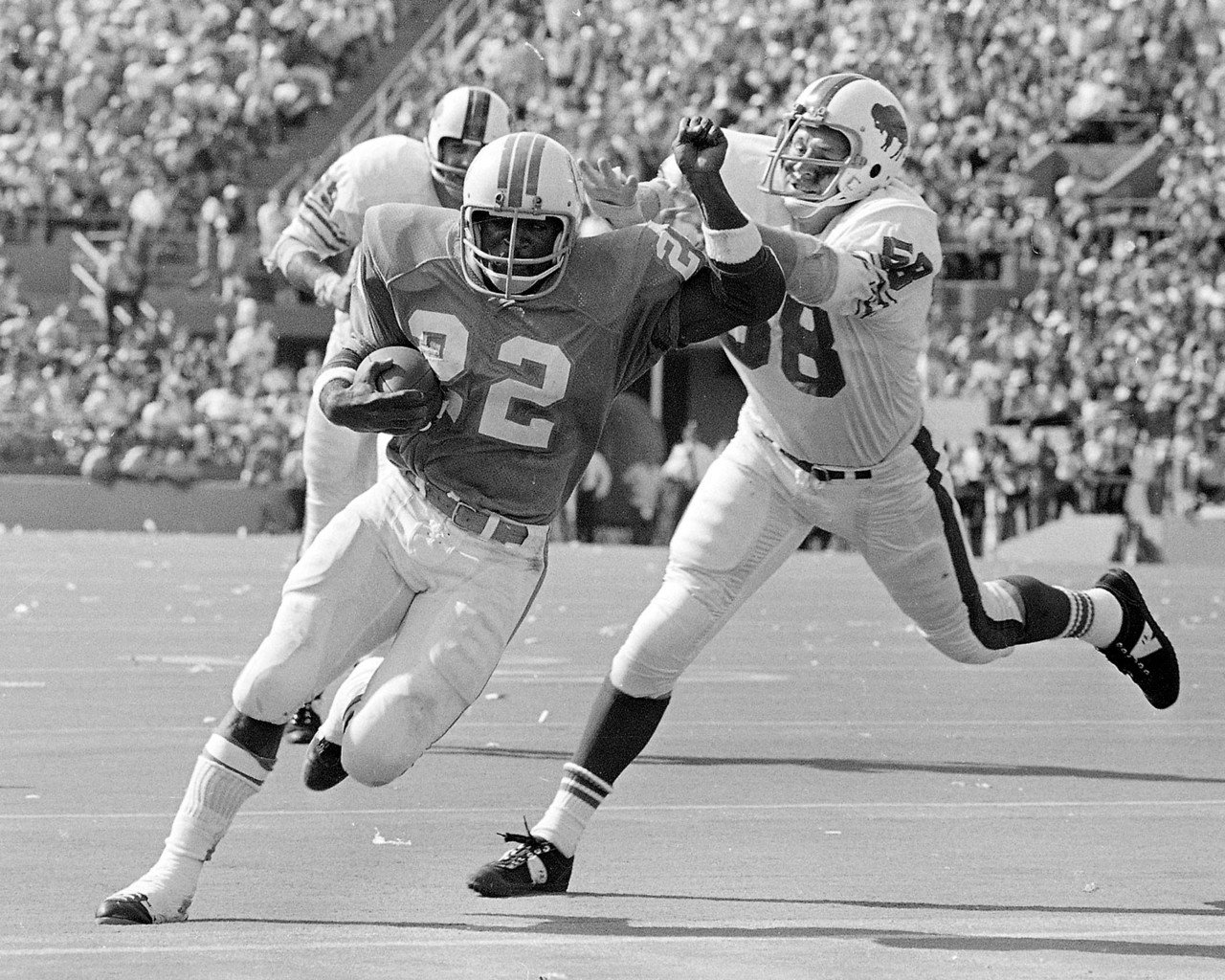 The Miami Dolphins made history in 1972 when they became the first team in 30 years to remain unbeaten for an entire season. They set NFL records in rushing on their way to the Super Bowl title and went on to defend the Super Bowl the following season. Despite losing two games in the 1973 season, many consider the Dolphins side of 73 even better than the undefeated side of 72 for the manner in which they went about defending their title. The Dolphins cruised through the playoffs, and arguably came up against tougher opponents than they had the previous year. Defending the Super Bowl is one thing but defending it in the style that the Dolphins did was something else.
The Miami Dolphins made history in 1972 when they became the first team in 30 years to remain unbeaten for an entire season. They set NFL records in rushing on their way to the Super Bowl title and went on to defend the Super Bowl the following season. Despite losing two games in the 1973 season, many consider the Dolphins side of 73 even better than the undefeated side of 72 for the manner in which they went about defending their title. The Dolphins cruised through the playoffs, and arguably came up against tougher opponents than they had the previous year. Defending the Super Bowl is one thing but defending it in the style that the Dolphins did was something else.
The only side to go undefeated since the 1972 Miami Dolphins are the New England Patriots in 2007. And they didn’t just beat opponents, they absolutely battered teams by huge winning margins. The Patriots had a real swagger and arrogance about the way they could so easily dismantle the opposition, they were so good going forward that they broke the record for most points in a single season. The Patriots comfortably advanced through the playoffs, meaning they just needed victory in the Super Bowl to cement their place in history as the greatest NFL side of all time. But, in one of the greatest shock in NFL history, they were beaten at the death by underdogs, the New York Giants.
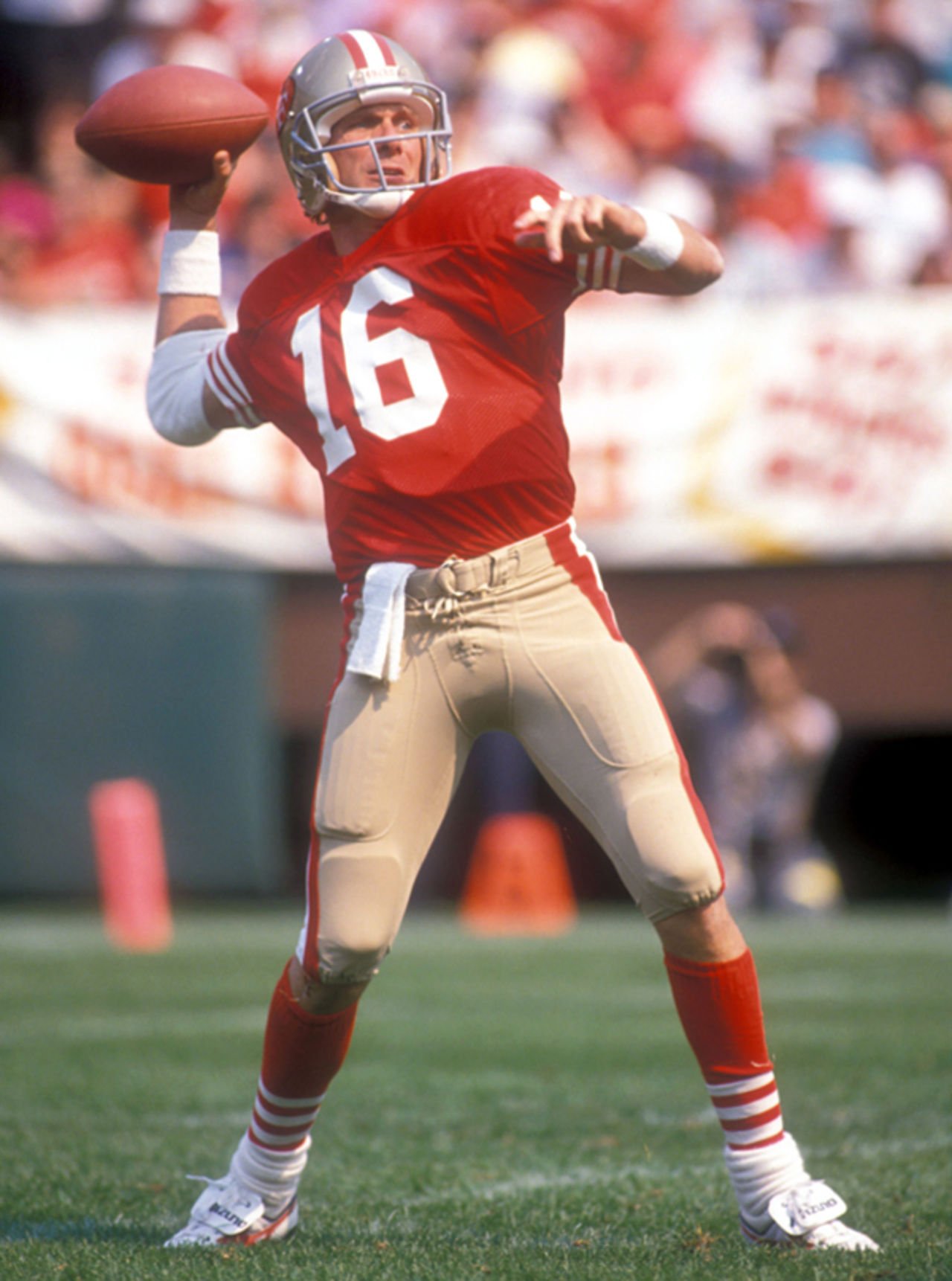 The San Francisco 49ers side of 1984 finished the season with just one defeat, setting one of the best records in NFL history. Joe Montana had the season of his life, scooping the Super Bowl’s MVP Award, as the 49ers cruised to victory against the Miami Dolphins. The Dolphins were an extremely strong side, but were still comfortably dispatched by the 49ers (38-16) to clinch the Championship. The margins by which they beat other top-class teams en route to the Super Bowl, sweeping aside equally tough opposition in the playoffs, makes them go down in history as one of the all time greatest.
The San Francisco 49ers side of 1984 finished the season with just one defeat, setting one of the best records in NFL history. Joe Montana had the season of his life, scooping the Super Bowl’s MVP Award, as the 49ers cruised to victory against the Miami Dolphins. The Dolphins were an extremely strong side, but were still comfortably dispatched by the 49ers (38-16) to clinch the Championship. The margins by which they beat other top-class teams en route to the Super Bowl, sweeping aside equally tough opposition in the playoffs, makes them go down in history as one of the all time greatest.
In college football, the Nebraska side of 1995 are considered the best of all time. They averaged over 50 points a game, winning every single game by at least 23 points. It was an incredible display of dominance, with 27 members of their hugely successful side going on to play professionally. Nebraska also had sublime squads in 1994 and 1971, with both sides going unbeaten all season.
Southern California were hugely dominant in 1972, with just one team getting within 10 points of them all season. They averaged a huge 39 points per game, with their opponents only able to muster an average of 10. The Southern California side of 2004 were also pretty nifty, they went on to win the Bowl Championship 55-19 against Oklahoma - a huge winning margin for such a big game.
All Time Great Players: Running back Jim Brown is widely regarded as one of the greatest American Footballers to ever grace the field. He began his career at Syracuse University, where he became renowned for astounding rushing statistics. Brown was picked in the first round of the NFL Draft by the Cleveland Browns in 1957. During his professional career lasting just 8 years, Brown made quite an impression, being named the NFL Most Valuable Player on three occasions. He retired in 1965 with records in touchdowns, number of rushing attempts and total number of rushing yards. Both Syracuse and the Browns retired his shirt number to honour his legendary status. During his college days, Brown was also extremely talented at lacrosse and basketball, and following his retirement he pursued a career in acting.
Jerry Rice is considered the greatest wide receiver of all time, and one of the all-time great NFL players. Rice attended Mississippi Valley State University, where his staggering catching ability became apparent. He was picked in the first round of the Draft in 1985 by the reigning Super Bowl champions, the San Francisco 49ers. He helped the 49ers to back to back Super Bowl championships in 1988 and 1989, claiming his third and final Super Bowl title in 1995. In a career spanning nearly 20 years for the 49ers, the Oakland Raiders and the Seattle Seahawks, Rice broke over 100 NFL records, including most points scored by a non-kicker and number of receptions. Despite having such a long and illustrious career, Rice missed just 17 games, an incredible feat from a superb athlete.
Lawrence Taylor is regarded as the greatest defensive player in NFL history. Following a successful college career at the University of North Carolina, Taylor was picked second in the Draft by the New York Giants, with whom he’d go on to spend his entire 12-year career as a linebacker from 1981 to 1993. 1986 marked a particularly stunning season for Taylor, which culminated in being named NFL MVP as he helped the Giants to the Super Bowl title. He is one of only two defensive players in NFL history to win this accolade. And no other defender has won it since. Taylor was frighteningly quick and powerful - one of the most feared players in the NFL. He has been credited with transforming the way defense and the linebacker position is played and this legacy is what makes him one of the all-time greats of the game.
Quarterback Joe Montana was a key component in the San Francisco 49ers dominance in the 1980’s. Montana attended the University of Notre Dame, where he won the national championship in January 1978. Montana won four Super Bowls during his time with the 49ers and was named Super Bowl MVP on three occasions, making him the first player to scoop a trio of Super Bowl MVP awards. His passing statistics are incredible, and his 1981 NFC Championship last minute game winning touchdown pass against the Dallas Cowboys is ingrained in NFL history and highlight videos - “The Catch” is one of the sport's most iconic moments. Montana was nicknamed “Joe Cool”, because of his ability to remain calm and collected under pressure, and “Comeback Kid” because of the way he could rally his teams when trailing in the latter stages of games.
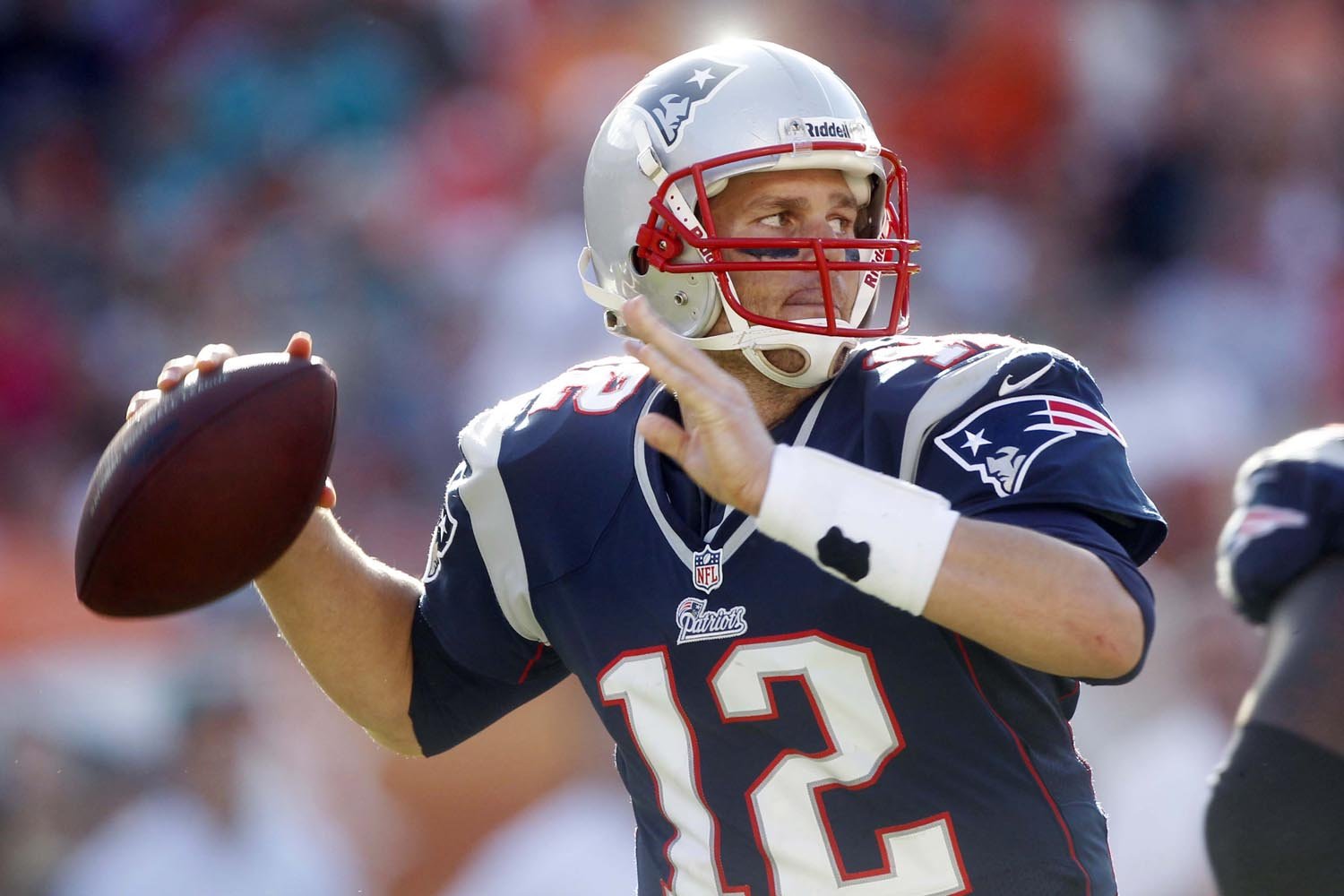 Players to Watch: Tom Brady has a staggering five Super Bowl titles to his name, the joint top in NFL history. He is regarded as one of the greatest quarterbacks of all time. Despite this, Brady was picked 199th in the NFL Draft by the New England Patriots and is therefore considered the biggest steal in Draft history. He played for the University of Michigan before his selection for the Patriots, and although he achieved success during his final two years at Michigan, he was never touted as an NFL star of the future. This makes what Brady has gone on to achieve since even more impressive. He has been an integral part of a hugely dominant Patriots side since 2000. Despite being 41, he is still able to influence games the same way he could when he was 21, a tribute to what an incredible athlete and player he is.
Players to Watch: Tom Brady has a staggering five Super Bowl titles to his name, the joint top in NFL history. He is regarded as one of the greatest quarterbacks of all time. Despite this, Brady was picked 199th in the NFL Draft by the New England Patriots and is therefore considered the biggest steal in Draft history. He played for the University of Michigan before his selection for the Patriots, and although he achieved success during his final two years at Michigan, he was never touted as an NFL star of the future. This makes what Brady has gone on to achieve since even more impressive. He has been an integral part of a hugely dominant Patriots side since 2000. Despite being 41, he is still able to influence games the same way he could when he was 21, a tribute to what an incredible athlete and player he is.
City Chiefs quarterback Patrick Mahomes had a stunning 2018, only his second season as a pro. He was picked in the first round of the NFL Draft after three successful years at Texas Tech. Mahomes is hotly tipped to win the 2018 Most Valuable Player award, and aged just 23, we can look forward to watching him break records for many years to come.
Where to See It: Lambeau Field, home of the Green Bay Packers in Wisconsin, is the most historic NFL stadium by some margin. Opened in 1957, its capacity of 80,000 is the third largest in the NFL. Despite not being the fanciest stadium in the States, it is hugely popular for the sheer sense of history inside its walls. The Packers have been playing at Lambeau Field longer than any other NFL side at their respective homes with only two other professional American sports teams having had longer active tenures in their home stadiums. The iconic stadium is named after the legendary founder, former player and coach of the Packers - Curly Lambeau.
Arrowhead Stadium is the fortress belonging to the Kansas City Chiefs in Missouri and is a 'must visit' for the atmosphere generated. In 2014, Arrowhead Stadium set a Guinness World Record for being the loudest outdoor stadium in sport, and is therefore an intimidating place for opponents. It first opened in 1972 and boasts a capacity of over 76,000.
CenturyLink Field in Washington, home to the Seattle Seahawks, and AT&T Stadium, home to the Dallas Cowboys in Texas are examples of more modern stadiums in the NFL. Both were built in the 2000’s, and both are completely stunning places to watch American Football.
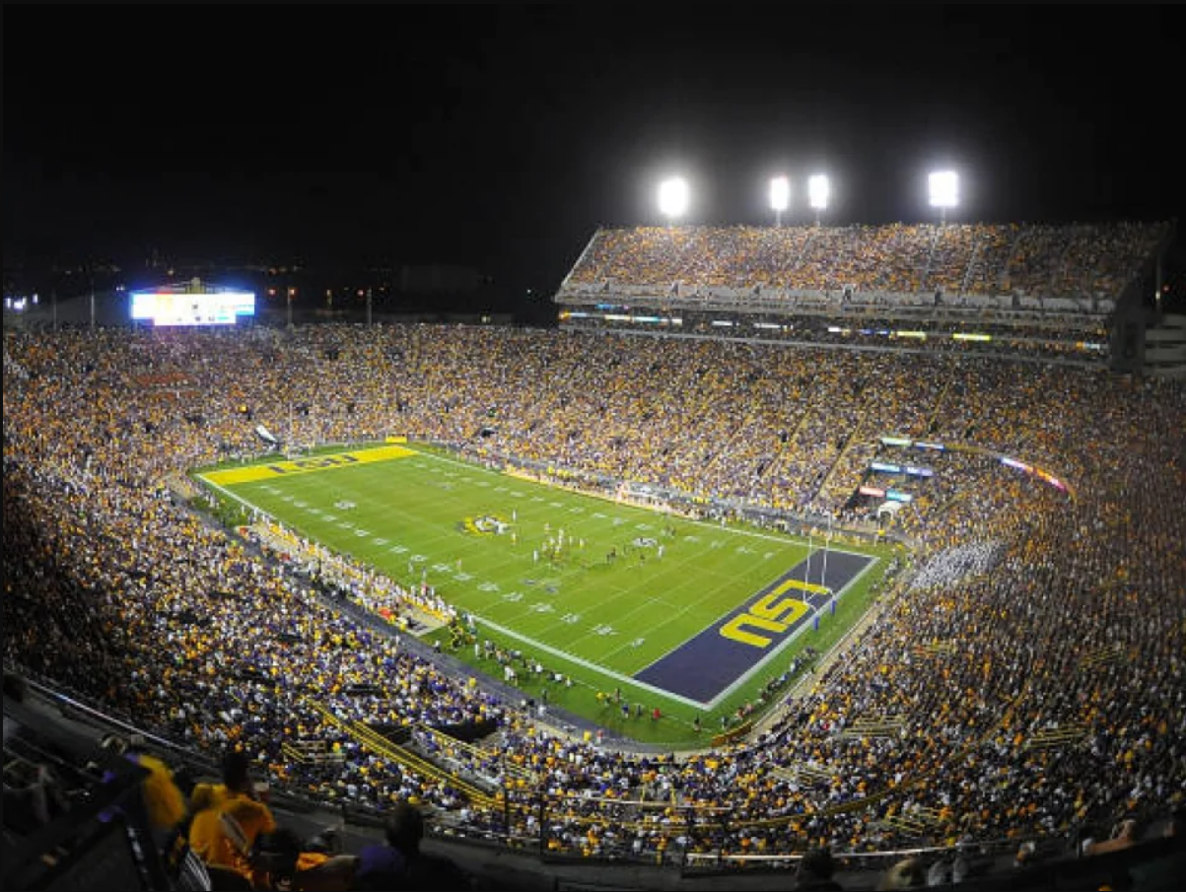 College stadiums are equally, if not more, impressive and tend to be older, with many having been first opened in the 1920’s. These stadiums have had considerable work done to them since, as the popularity of the game has grown, resulting in the biggest stadiums now boasting a six-figure capacity.
College stadiums are equally, if not more, impressive and tend to be older, with many having been first opened in the 1920’s. These stadiums have had considerable work done to them since, as the popularity of the game has grown, resulting in the biggest stadiums now boasting a six-figure capacity.
The Tigers Stadium, home to Louisiana State University has a capacity of 102,321, making it the sixth largest stadium in the world. It’s one of the loudest stadiums in the country, and is consistently ranked as the most intimidating place to play for away teams. The atmosphere is phenomenal, especially for night matches, making it one of the top places to sample college football at its best.
Michigan Stadium, home to the University of Michigan, is a sight to behold. A capacity of 107,601 means it clocks in as second in the list of largest sports stadiums in the world and Michigan make full use of their bumper stadium with every home game since 1975 drawing a crowd of over 100,000
For European fans of American Football, unable to make it to the States, Wembley Stadium in London has hosted a selection of NFL fixtures since 2007. A near capacity crowd is always a guarantee, with some of the biggest names in the game making appearances in recent years. Wembley Stadium is simply fabulous too, with 90,000 seats and the famous 440ft arch.
Fixture can help with visits to: Levi’s Stadium in the San Francisco Bay Area, MetLife Stadium in New Jersey and Wembley in London.
Written on 1st February 2019
Photos by NFL; NCAA Football
Contact us to organise your next trip